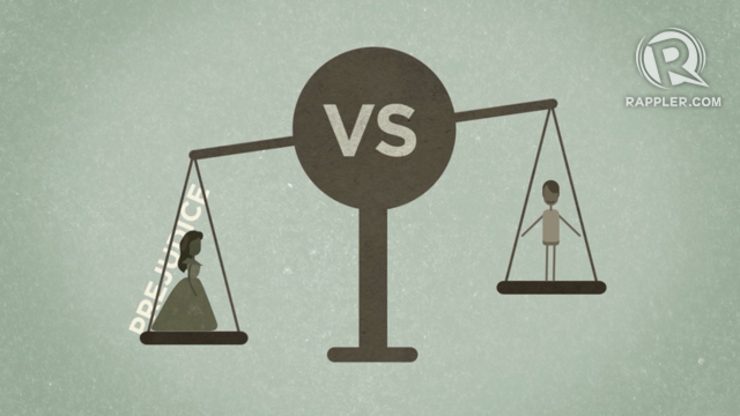SUMMARY
This is AI generated summarization, which may have errors. For context, always refer to the full article.
 The plight of women and their place in society has increasingly been a topic of discussion in various news platforms around the world as international headlines spoke of the state ban in India of a BBC documentary examining a horrific 2012 gang rape incident.
The plight of women and their place in society has increasingly been a topic of discussion in various news platforms around the world as international headlines spoke of the state ban in India of a BBC documentary examining a horrific 2012 gang rape incident.
The rapists’ lack of remorse and their conviction that the blame for rape should be focused solely on the victim is disturbing to say the least. Such statements and the government’s refusal to air the documentary have generated widespread protest in the country.
Violence against women is a persistent phenomenon.
The Global Status Report on Violence Prevention 2014 cited that 1 in every 3 women has been physically or sexually attacked by her partner. Such violence is said to have a perverse long-term impact on the mental, physical and psychological health of marginalized groups – particularly women and children. The report draws on data from 133 countries.
Indeed, in many parts of the world, much has still to be done to advance the state of women.
According to the Global Gender Gap Report 2014, the gender gap for economic participation and opportunity for 111 countries was 60% worldwide, an improvement from 56% in 2006. The gap for political empowerment was at a dismal 21%, revealing wide disparities in political representation across sexes across the globe.
The Philippines has actually fared well on cross-country examinations of gender equality. In 2014, we ranked 9th on the World Economic Forum’s Global Gender Gap Index and placed 1st in Asia Pacific and had the distinction of being the only country in the region to close the gender gap in educational attainment and health and survival.

We moreover ranked in the top 10 for three out of 4 sub-indices measured by the Index – healthcare, education, political participation and economic inequality – and held the top spot in the lower middle-income group of countries in 2013. The country has furthermore consistently placed in the top 10 since 2006.
In 2011, 39% of higher education institutions were led by women – an especially high figure in a region characterized by significantly lower levels of female participation in research roles. Women moreover comprised more than 45% of researchers in the country – a figure surpassing some more developed countries and placing the country in the 5th position worldwide in terms of proportion of female researchers, according to the UNESCO World Atlas of Gender Equality in Education in 2012.
In the primary, secondary and tertiary levels of schooling, girls have actually outperformed boys in most education indicators, registering higher school participation rates, completion rates and achievement test scores than their male counterparts.
Yet, in spite of the country’s strong track record in providing females with equal access to education and health, significant gender disparities persist, particularly in the context of employment and wages.
An examination of the average daily wages of workers in selected low income occupational groups shows that men earned 32% to 52% more in daily basic pay than their female counterparts in 2013.
The implications of these gender wage gaps are significant as these groups comprise 64.8% of the total Philippine labor force.
| Major Occupation Group | Average daily basic pay for selected low income occupational groups as of 2013 | |
| Women | Men | |
|
Service Workers and Shop and Market Sales |
P219.86 |
P334.08 |
|
Farmers, Forestry Workers and Fishermen |
P200.08 |
P294.85 |
|
Trades and Related Workers |
P244.59 |
P323.18 |
|
Laborers and Unskilled Workers |
P159.18 |
P213.89 |
(Source: Department of Labor and Employment)
The Philippine Commission on Women also reveals gender disparities in employment outcomes. Unpaid family workers in family-operated farms or businesses were predominantly women with 2.4 million unpaid female family workers, compared to the 1.8 million males.
Equality, labor, fertility
Gender inequality in labor and employment is hampered by a high adolescent fertility rate (46.5%) and high total fertility rate (3.10 births per woman), which could restrict access to the array of occupational choices available to women and limit their hours of paid work.
This is reflected in the Decent Work Indicators provided by the Bureau of Labor and Employment statistics in 2010, whereupon 31% of working age women were reported to be economically inactive due to household or family duties. Females also constitute a higher percentage of low-paid employees, with hourly basic wages below two-thirds of the median.
The negative consequences of gender discrimination at the societal level are widespread and far-reaching.
Development agencies are united in the recognition that gender disparities have a detrimental impact on poverty alleviation and economic growth. Policies and practices which chronically disadvantage women lead to labor inefficiencies, lower productivity and slower growth.
Conversely, female empowerment has been tied to improved development outcomes such as reduced child mortality rates, increased household investments in the schooling and health of children as well as broader economic growth.
This last point is succinctly expressed by Bill Gates as he addressed a gender-segregated crowd (men to one side, women to another) during a business seminar in Saudi Arabia in 2007. When asked by an audience member whether Saudi Arabia could realistically meet its goal of becoming one of the world’s most competitive economies by 2010, Gates replied “Well, if you’re not fully utilizing half the talent in the country, you’re not going to get too close to the top.”
If the latest Global Competitiveness Report is an indication, Gates’ forecast was right as Saudi Arabia was outranked by 23 of its peers. – Rappler.com
Data is drawn from an upcoming paper by Yap and Melchor titled Beyond parity in education: Gender disparities in labor and employment outcomes in the Philippines.
Monica Melchor is currently a research associate at the Rizalino S. Navarro Policy Center for Competitiveness (formerly AIM Policy Center). The views herein are the author’s and do not necessarily reflect those of the Asian Institute of Management (AIM).
Got stories to tell? Share your ideas on women, development, and gender with move.ph@rappler.com. Speak up on #GenderIssues!
You may also want to join our #SHEro campaign here.
Add a comment
How does this make you feel?





There are no comments yet. Add your comment to start the conversation.